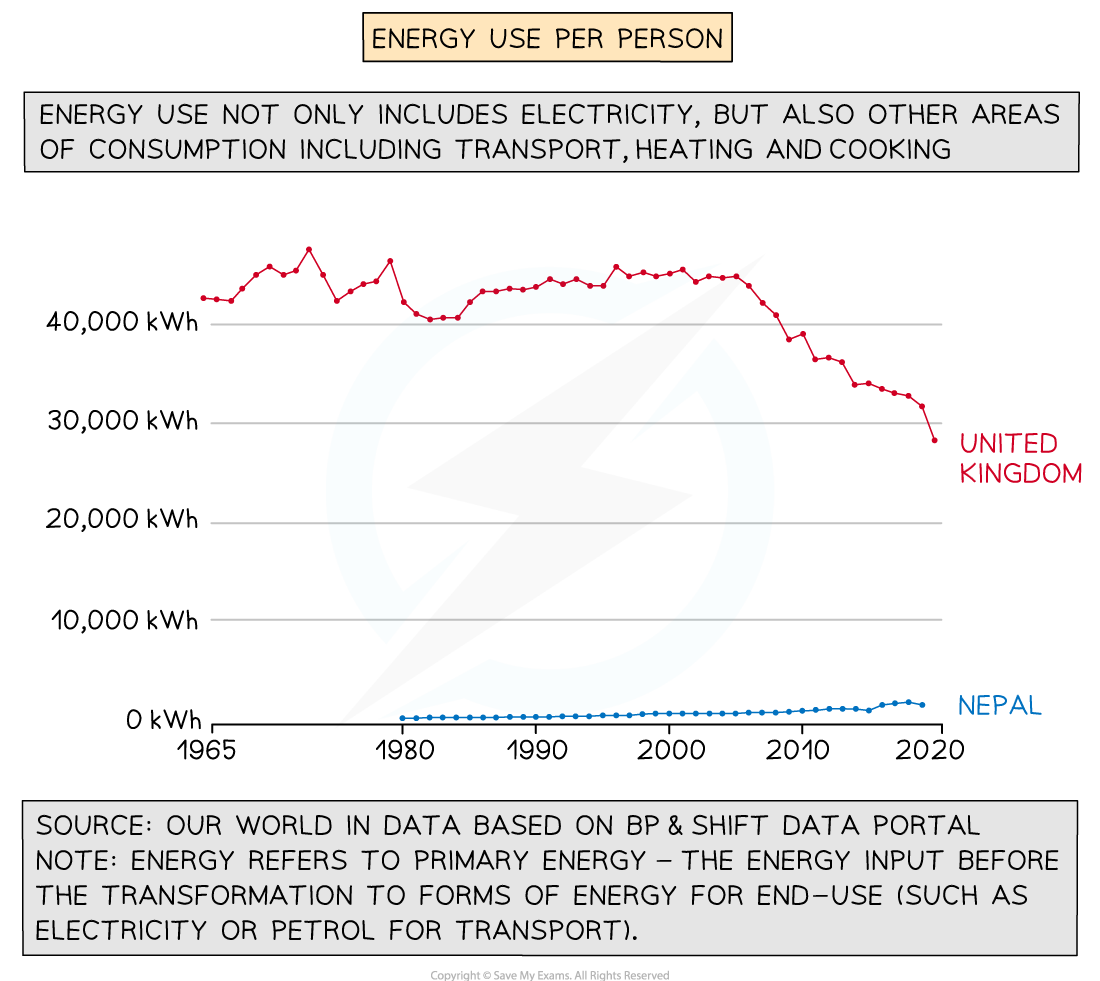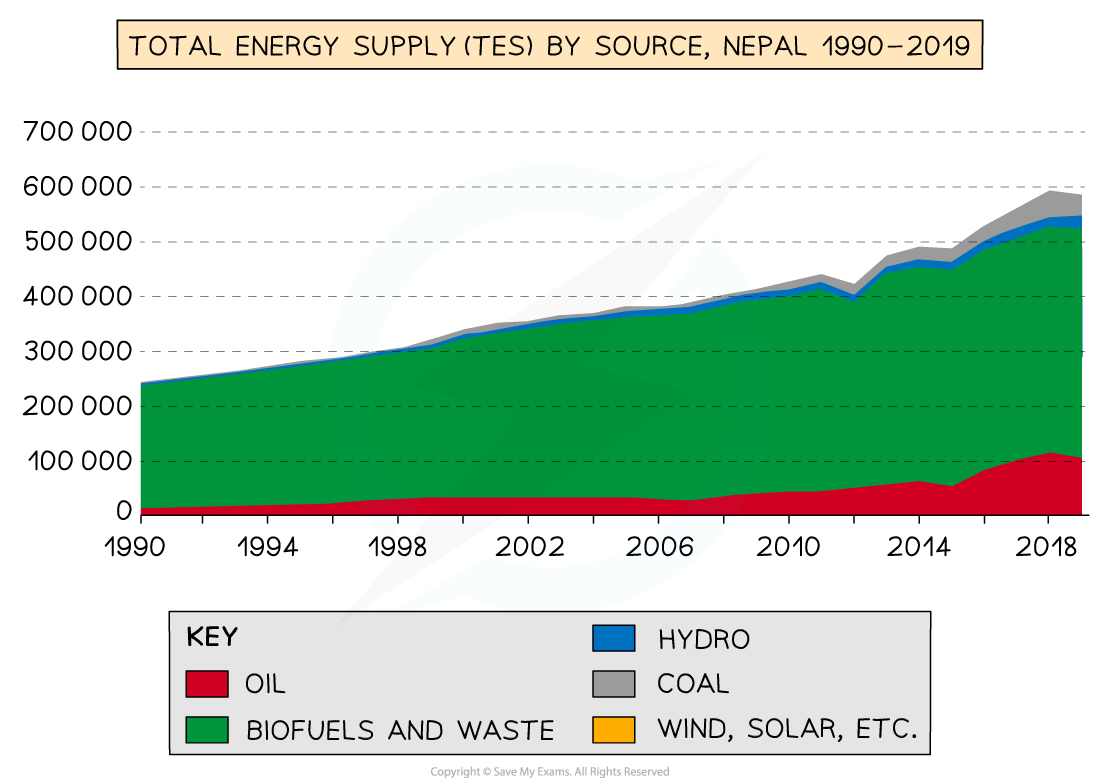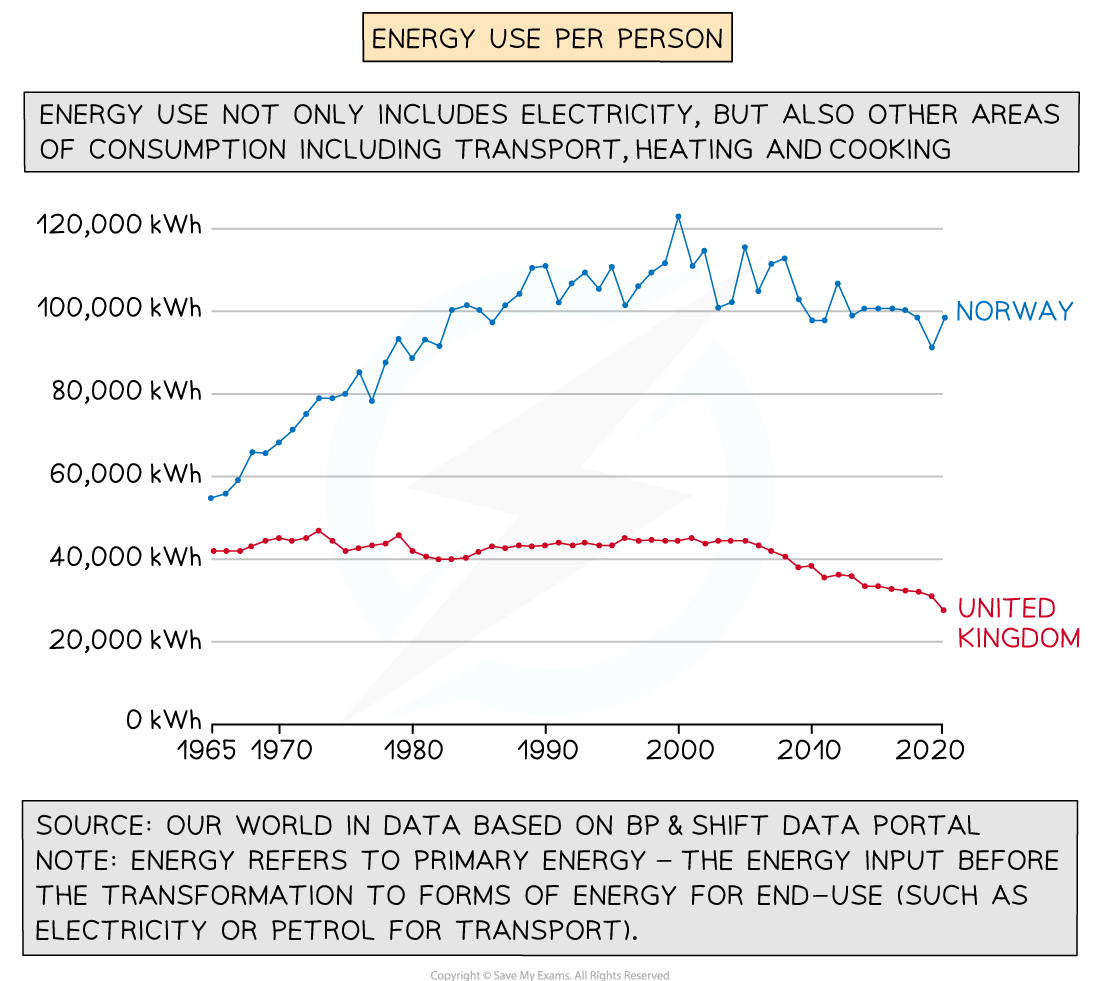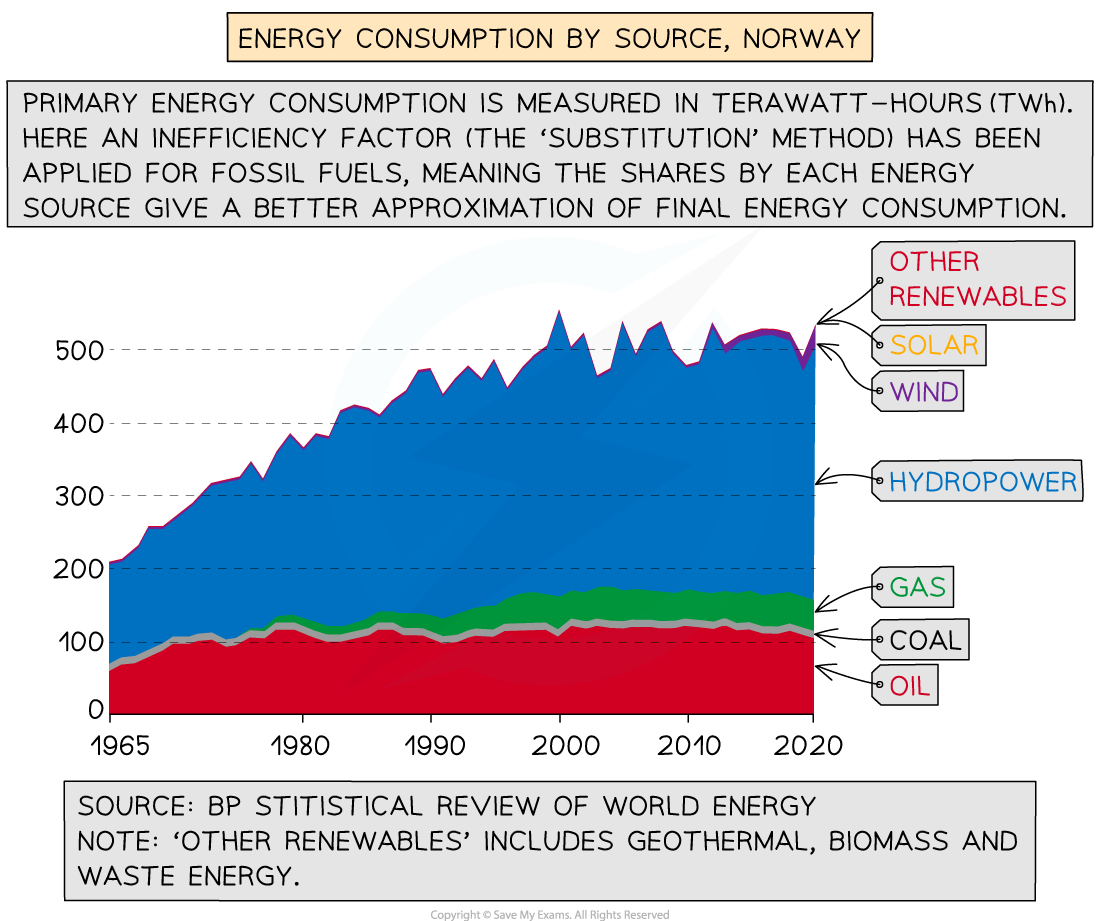Sustainable Energy Management
- Sustainable energy management is essential if future generations are to have the energy resources they need
- Non-renewable sources will at some point run out so need to be used carefully
- As supplies start to run out prices will increase this will mean:
- Economic development is harder as profits will decrease
- Countries with an energy surplus become more powerful
- Countries with an energy gap pay more to import energy
- Fossil fuels create pollution and emit greenhouse gases so the amount used needs to be reduced
- Energy management can be Individual and national
- Energy efficiency is key to making the most of energy sources as it cuts down on waste and reduces consumption
- Less energy is used and fuel is used more economically
Individual
- There are many actions that individuals can take to reduce energy use or use energy more efficiently including:
- Reduce car use by using public transport, walking or cycling
- Insulating walls and roof spaces
- Buy energy efficient (AAA rated) appliances such as washing machines
- Don't leave electrical items on standby
- Install double or triple glazing
- Install heat exchange
- Turn the thermostat down and wear more layers
- Install solar panels
National
- Governments have several strategies to make energy use sustainable including:
- Invest in renewable technologies such as wind and solar
- Encourage the switch to electric cars
- Invest in public transport
- Provide grants and loans for homeowners to install solar panels or insulation
- Building regulations to ensure that new homes are energy efficient
Energy Management in Nepal
Energy Use
- Nepal is a developing country located between China and India
- The landscape is mountainous and includes much of the Himalayas
- The population is rural with only 16% of the population living in towns and cities
- Energy demand is very low but growing as the country develops

Energy use per person in Nepal and UK
Energy Mix
- The main source of energy for 82% of the rural population is fuelwood
- In urban areas the use of fuelwood is 36%
- Nepal has no suitable coal, oil or gas reserves so these have to be imported
- 98% of all electricity in Nepal is generated through hydropower

Energy Mix in Nepal
Sustainable Future
- Access to electricity has increased rapidly over the past 15 years:
- 88% of the population now have access to electricity
- Support from the World Bank has led to more investment in hydropower
- There are now over 3000 micro-hydro plants in Nepal
Ruma Khola Micro-Hydro
- Completed in 2009
- Provides electricity for the town of Darbang and five neighbouring villages
- It supplies energy for 22 industries including:
- metal workshop, furniture manufacturers, a cement block manufacturer, a noodle factory, poultry farms and dairy farms
- Built and operated by the community the micro-hydro plant was funded using grants from the government with support from the World Bank
- The loans are paid back using money that the community pay for the electricity supply
- It has improved the standard of living in the communities
- Reliance on kerosene and fuelwood has reduced and emissions have fallen
- Deforestation has decreased
Energy Mangement in Norway
Energy Use
- Norway is a developed country in northern Europe
- The demand for energy is one of the highest in the world
- The population is mainly urban with 83% of people living in the towns and cities

Energy Use per Person in Norway and UK
Energy Mix
- Norway has significant energy resources including:
- 1% of the world gas reserves (17th in the world)
- 0.3% of the world oil reserves (22nd in the world)
- There are also some coal reserves
- Norway is one of the world's largest energy exporters
- Hydropower generates 90% of Norway's electricity and accounts for 65% of energy use

Energy Mix Norway
Sustainable Future
- There are over 1500 hydropower plants in Norway
- Due to the issue of reliance on hydropower during the dry season and the environmental impact of large hydropower plants Norway is expanding other renewable energy sources
- Demand continues to increase
- Norway is expanding the number of wind farms:
- There are currently 53 wind farms
- 36 additional onshore and offshore are planned and due to be started or completed by 2030
- Includes the world's first floating wind farm
- Norway is also investing in solar energy:
- Homeowners in Oslo get a 30% subsidy for installing solar panels
- To reduce consumption of oil Norway is encouraging the population to move to electric cars:
- In 2021 66% of all new car sales in Norway were electric










